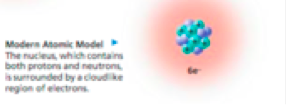2018 Elements, Atoms And Bonding Rho Pre-mid Term Quiz
-
Elements are called building blocks of matter because:
-
All matter is composed of one element or a combination of two of more elements.
-
All elements are made of molecules.
-
All matter is made of hydrogen.
-
All matter is composed of two or more elements in a specific ratio.
-
The 2018 Elements, Atoms and Bonding RHO Pre-Mid Term Quiz assesses understanding of basic chemical principles including the nature of compounds, atomic theory, and the discovery of subatomic particles. It evaluates knowledge crucial for grasping the fundamental building blocks of matter.

Quiz Preview
- 2.
A scientific theory
-
Is a well-tested idea that EXPLAINS and connects a wide range of observations. It explains how nature works.
-
Is a statement that describes nature's behavior.
-
Is a method of inquiry used to test an idea.
-
Option 4
Correct Answer
A. Is a well-tested idea that EXPLAINS and connects a wide range of observations. It explains how nature works.Explanation
A scientific theory is a well-tested idea that explains and connects a wide range of observations. It goes beyond just describing nature's behavior and provides an explanation for how things work in nature. This explanation is based on evidence and has been tested through experiments and observations. A scientific theory is not just a method of inquiry, but rather a comprehensive explanation that helps us understand the natural world.Rate this question:
-
- 3.
Rutherford's Gold Foil Experiment demonstrated that
-
Electrons move around a small positively charged nucleus in the center of the atom.
-
The electrons are in orbit like planets around the sun.
-
Electrons are in a cloud that floats around the nucleus.
-
Electrons have only specific amounts of energy related to the orbits in which they move.
Correct Answer
A. Electrons move around a small positively charged nucleus in the center of the atom.Explanation
Rutherford's Gold Foil Experiment involved firing alpha particles at a thin sheet of gold foil. The majority of the alpha particles passed straight through the foil, but a small fraction were deflected or bounced back. This led Rutherford to conclude that atoms have a small, dense, positively charged nucleus at their center, around which the negatively charged electrons orbit. This explanation is supported by the observation that most of the alpha particles passed through the gold foil, indicating that atoms are mostly empty space.Rate this question:
-
- 4.
Which of the following is not a mixture?
-
Oxygen
-
Air
-
Soil
-
Orange juice
Correct Answer
A. OxygenExplanation
Oxygen is not a mixture because it is an element. A mixture is a combination of two or more substances that are physically combined and can be separated by physical means. Oxygen, on the other hand, is a pure substance that cannot be broken down into simpler substances by physical or chemical means. Therefore, it is not considered a mixture.Rate this question:
-
- 5.
In 430 b.c. ancient Greece, a philosopher named Democritus proposed the idea that matter is made up of very small pieces that are "uncuttable" into smaller parts and still be that element. It took 2000 years until Democritus' idea was accepted. These small "uncuttable" pieces are called:
-
Atoms
-
Molecules
-
Ions
-
Elements
Correct Answer
A. AtomsExplanation
Democritus proposed the idea that matter is made up of very small pieces that cannot be divided further and still retain their properties. These small, indivisible particles are called atoms. It took 2000 years for Democritus' idea to be accepted, but eventually, the concept of atoms became a fundamental principle in chemistry and physics. Atoms are the building blocks of matter and combine to form molecules, ions, and elements.Rate this question:
-
- 6.
A compound is different from an element because a compound is:
-
Made of two or more elements chemically combined.
-
The building block of all matter.
-
A mixture of elements.
-
A pure substance.
Correct Answer
A. Made of two or more elements chemically combined.Explanation
A compound is different from an element because it is made of two or more elements chemically combined. Unlike elements, which are made up of only one type of atom, compounds consist of different types of atoms bonded together in specific ratios. This chemical combination results in new properties and characteristics that are distinct from the individual elements. Therefore, a compound is a unique substance formed by the chemical union of multiple elements.Rate this question:
-
- 7.
John Dalton's, with only a few changes, is still accepted today. John Dalton's atomic model could be described:
-
Smooth and solid, like a lacrosse ball, that cannot be broken down into smaller pieces.
-
Like a muffin with positive charges and electrons scattered in spheres around the positive charges.
-
Like planets orbiting the sun, or the layers of an onion, electrons orbit the nucleus.
-
Like a cloud, with expanding energy levels.
Correct Answer
A. Smooth and solid, like a lacrosse ball, that cannot be broken down into smaller pieces.Explanation
John Dalton's atomic model is still accepted today because it proposed that atoms are indivisible and cannot be broken down into smaller pieces, similar to a smooth and solid lacrosse ball. This model laid the foundation for understanding the structure of matter and the concept of atoms as the building blocks of all substances. Despite advancements in atomic theory, Dalton's idea of atoms being fundamental particles has stood the test of time.Rate this question:
-
- 8.
This scientist discovered another particle in the nucleus of an atoms. The discovery completed the modern atomic model. This particle was hard to detect because it does not have an electrical charge even though it has nearly the same mass as a proton. Because the particle had no electrical charge it was called a neutron.
-
Chadwick
-
Bohr
-
Thomson
-
Rutherford
-
Dalton
Correct Answer
A. ChadwickExplanation
Chadwick is the correct answer because he is the scientist who discovered the neutron, which is a particle in the nucleus of an atom. The neutron is hard to detect because it has no electrical charge, but it has nearly the same mass as a proton. Chadwick's discovery of the neutron completed the modern atomic model.Rate this question:
-
- 9.
All the atoms of a single element have the same number of protons. Different elements have different number of _______________
-
Protons
-
Neutrons
-
Electrons
-
Nucleus
Correct Answer
A. ProtonsExplanation
All the atoms of a single element have the same number of protons. This is because the number of protons in an atom determines its atomic number and defines the element. Different elements have different numbers of protons, which is why they have different atomic numbers and are classified as separate elements. Neutrons and electrons, on the other hand, can vary in number within atoms of the same element, leading to different isotopes and ionization states. The nucleus is the central part of an atom that contains protons and neutrons, but it is not directly related to the statement that all atoms of a single element have the same number of protons.Rate this question:
-
- 10.
Identify which statement is NOT part of John Dalton's atomic theory:
-
Atoms have no overall electrical charge because each atom has the same number of electrons as protons.
-
All atoms of the same element are exactly alike and have the same mass. Atoms of different elements are different and have different masses.
-
An atom of one element cannot be changed into an atom of a different element. Atoms cannot be created or destroyed in any chemical change, only rearranged.
-
Every compound is composed of atoms of different elements combined in a specific ratio.
-
All elements are composed of atoms that cannot be divided.
Correct Answer
A. Atoms have no overall electrical charge because each atom has the same number of electrons as protons.Explanation
John Dalton's atomic theory states that all atoms of the same element are exactly alike and have the same mass, atoms of different elements are different and have different masses, an atom of one element cannot be changed into an atom of a different element, atoms cannot be created or destroyed in any chemical change, only rearranged, every compound is composed of atoms of different elements combined in a specific ratio, and all elements are composed of atoms that cannot be divided. However, it does not mention anything about atoms having no overall electrical charge because each atom has the same number of electrons as protons.Rate this question:
-
Quiz Review Timeline (Updated): Aug 23, 2023 +
Our quizzes are rigorously reviewed, monitored and continuously updated by our expert board to maintain accuracy, relevance, and timeliness.
-
Current Version
-
Aug 23, 2023Quiz Edited by
ProProfs Editorial Team -
Dec 09, 2018Quiz Created by
Rhaveno
History Of The Atomic Theory Quiz
Take this fun History of the atomic theory quiz now and expand your knowledge. Atoms are the smallest units of matter, and they combine to form compounds. Do you know that a...
Questions:
13 |
Attempts:
4645 |
Last updated:
Mar 05, 2024
|
History Of Atomic Theory
Explore the foundational concepts of atomic theory through this engaging quiz. Test your knowledge on key historical models and discoveries, from Rutherford's nucleus proposal to...
Questions:
7 |
Attempts:
245 |
Last updated:
Mar 20, 2023
|
Atoms, Compounds, And Elements PreTest
This quiz is a pretest to the physical science unit (8th grade level) which covers atomic theory, atomic structure, molecules, compounds, and elements.
Questions:
10 |
Attempts:
612 |
Last updated:
Mar 21, 2023
|
BK Ch 1 Discovery Of The Atom Quiz
Explore the foundational concepts of atomic theory in the 'BK Ch 1 Discovery of the Atom Quiz'. Assess your understanding of historical and scientific perspectives on atoms,...
Questions:
15 |
Attempts:
143 |
Last updated:
Apr 18, 2024
|
Active Chemistry Chapter 1 Section 3
This is a quiz covering relative masses and the early development of the atom!
Questions:
8 |
Attempts:
94 |
Last updated:
Nov 10, 2023
|
Chemistry Practice Review Questions!
Are you a lover of chemistry? Are you aware of John Dalton, who introduced the atomic theory into chemistry? Everything around us is formed of atoms, and they are made of...
Questions:
16 |
Attempts:
7723 |
Last updated:
Mar 18, 2023
|
 Back to top
Back to top









